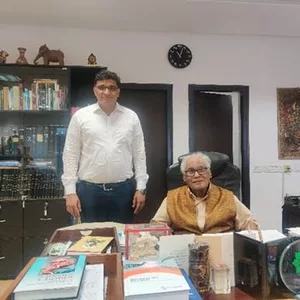Indian Scientists Investigate Structural Shifts in Hybrid Perovskites for Renewable Energy Generation

New Delhi, March 11 (IANS) – A team of Indian scientists from Jawaharlal Nehru Centre for Advanced Scientific Research (JNCASR) has delved into the atomic rearrangements in lead iodide perovskites during phase transitions due to temperature and pressure changes. This study, detailed in the Journal of Materials Chemistry A, sheds light on the materials’ optoelectronic properties for efficient renewable energy generation.
Lead iodide perovskites have garnered attention for their high energy conversion efficiency surpassing silicon-based solar cells. However, these materials are not inherently stable and undergo structural changes or phase transitions under varying conditions, impacting their performance. Researchers, including Professor Pratap Vishnoi and Professor C.N.R. Rao, reviewed existing literature on these phase transitions and crystal structures, emphasizing the need to address their instability for better renewable energy production.
Analyzing over a hundred publications, the scientists focused on the strengths and limitations of techniques like X-ray and neutron diffraction commonly used in studying lead iodide perovskites. They also discussed the chemical instability of these materials, particularly their decomposition when exposed to humid air. The researchers believe that further studies on these perovskites and other hybrid types could pave the way for more efficient solar cell materials if stability issues are resolved.
The potential of lead iodide perovskites for solar cell applications lies in their ability to be processed into thin films. Despite their instability challenges, scientists are optimistic about the prospects of these materials in renewable energy generation. With advancements in research and technology, addressing the stability concerns could lead to significant improvements in solar cell efficiency using lead iodide perovskites.
In conclusion, the exploration of atomic rearrangements in lead iodide perovskites by Indian scientists highlights the importance of understanding phase transitions and crystal structures in optimizing renewable energy generation. This study opens up possibilities for the development of more efficient solar cell materials, provided that the instability issues of lead iodide perovskites are effectively addressed.









